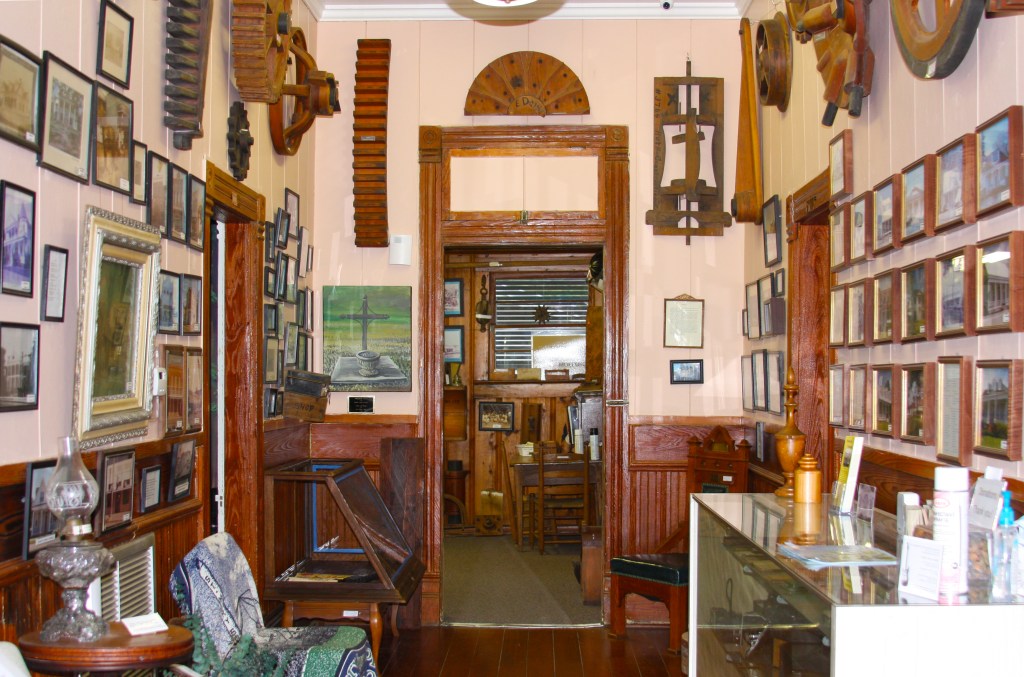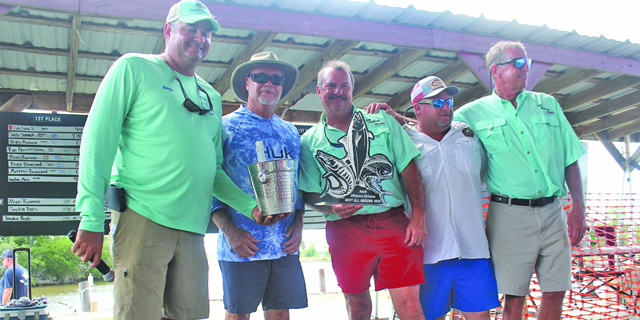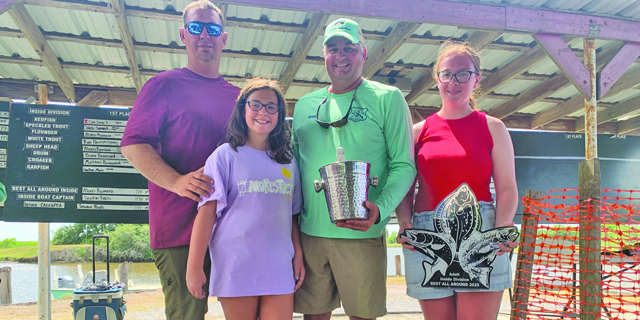A chance encounter reading the kiosk at a paddle trail set this donation in motion.
Published 8:00 am Wednesday, September 15, 2021

- JeanMuseum-Foyer.jpg
Wayne “Blue” Burns wasn’t expecting to have an epiphany that day last summer when he began reading the newly-erected information kiosk at the Bayou Teche Paddle Trail in Jeanerette’s Bicentennial Park. There, written on the kiosk, was a section on the history and heritage of music in the Jeanerette area, which included a paragraph about Burns himself. The encounter so moved him that day, he was inspired to contact the Jeanerette Museum with an offer – and on August 11, he donated his own prized bass guitar at a public ceremony.
Burns is no ordinary guitarist. He is a lifelong musician, having started playing guitar when he was just 9 and traveling with bands at 14. The Jeanerette native would go on to perform with the likes of Ernie Doe, The Larks, Betty Wright, Percy Sledge, Buckwheat and The Hitchhikers, Lil Buck Senegal, Jude Taylor, and Nathan & The Zydeco Cha Chas. He traveled the world as a musician, including in all 50 states, as well as countries in Africa, Asia, Europe and South America. And he was one of the first African-American performers to play in East Berlin after the wall was torn down. Burns’ proudest moment came in 1982 when he played bass for Clifton Chenier and the Red Hot Louisiana Band and won the Grammy for the masterpiece album “I’m Here.”
Trending
Two Gifts and a Performance
Standing on the porch of the Jeanerette Museum before dozens of attendees of the donation ceremony, Burns was lauded for his contributions to music by David Dahlquist of the TECHE Project and Jeanerette Mayor Carol Bourgeois, Jr., who read a proclamation declaring Wayne “Blue” Burns Day. Addressing the crowd, Burns said, “I know I won’t be here long but I want the guitar to live on.” To everyone’s surprise, Burns also donated a framed print depicting the music and musicians of Southwest Louisiana in 1928 – something he’d hung on his own wall and cherished over the years. Afterwards, the musician delighted the crowd with a live performance.
As for the donated guitar, it now has its own glass case and is prominently displayed in the museum’s music room, alongside the unexpected print he donated.
Le Beau Petit Musée
Burns could not have chosen a better recipient for his generous donation. Known to some as Le Beau Petit Musée (The Pretty Little Museum), the Jeanerette Museum at 500 E. Main Street contains an impressive collection of artifacts and exhibits pertaining to the historical background of the City of Jeanerette and surrounding areas.
The pink cypress house, built in 1902, was dedicated as a museum in 1976 and has retained its Victorian-era, homelike feel. Particularly clever curation and creative display of the artifacts in themed rooms allows visitors to view the items, while getting a feel for a typical turn-of-the-century home.
Trending
Artifacts and photographs line the entranceway walls, while a room to the left contains the music-related archives, complete with an antique piano, photographs, and vinyl records, as well as Burns’ most recent donations. Across the foyer is home to an impressive sewing collection donated by the Patout family, dating back to 1879. Hand sewn clothes and handmade lace items, tatting and French embroidery, as well as a fully-working antique sewing machine are just part of this collection.
Down the foyer hallway, the home’s kitchen is where visitors will find cooking and culinary-related artifacts, while an adjacent area displays dozens of antique handmade cypress tool patterns donated from the local cypress mill. A bedroom contains period bedroom furniture, bedclothes, a communion dress from 1918, and a quilt made by a 9-year-old in 1896. Across the hall, the museum’s Swamp Room, with its exhibits of native Southwest Louisiana low country species, is a favorite for young visitors. A cane-break rattler slithers across the wall, while ducks take flight, all against the backdrop of a Louisiana swamp mural. A few easy steps out the back door lead to a large annex in the back of the property, which covers themes of the Jeanerette-area community life outside the home, like school life, military life and Mardi Gras.
While artifacts of everyday family living are abundant in the Jeanerette Museum, its overarching homage is to the sugar cane industry. One noteworthy exhibit details 200 years of sugar cane in the area. Full of photographs and informational signage, it documents the industry’s history in the parish and shows cane being planted by hand. The exhibit was created by the University of Louisiana at Lafayette and is on permanent loan to the museum. Also available is a film on the history of sugar cane, which tour guides say is of great interest to locals and to people from all over the country. On the grounds, visitors will find several pieces of antique farm equipment and a vintage fire truck (for which they are actively seeking a volunteer to repair and restore).
Rounding out this impressive museum are the library, with old issues of Jeanerette Enterprise donated by The Daily Iberian, a microfiche archive, and a collection of genealogy books. Museum organizers also have a working relationship with the Smithsonian and have hosted major exhibits in the past.
On days the museum is open (check website for current operation hours), guides Mona Stansbury or Kathy Rosamond (and sometimes both) offer a personal guided tour that reflects their enthusiasm for the community contributions that built the museum and the rich history of the area. This museum is a surprise and a delight, and it is not to be missed.
For more information on the museum, visit jeanerettemuseum.com.





